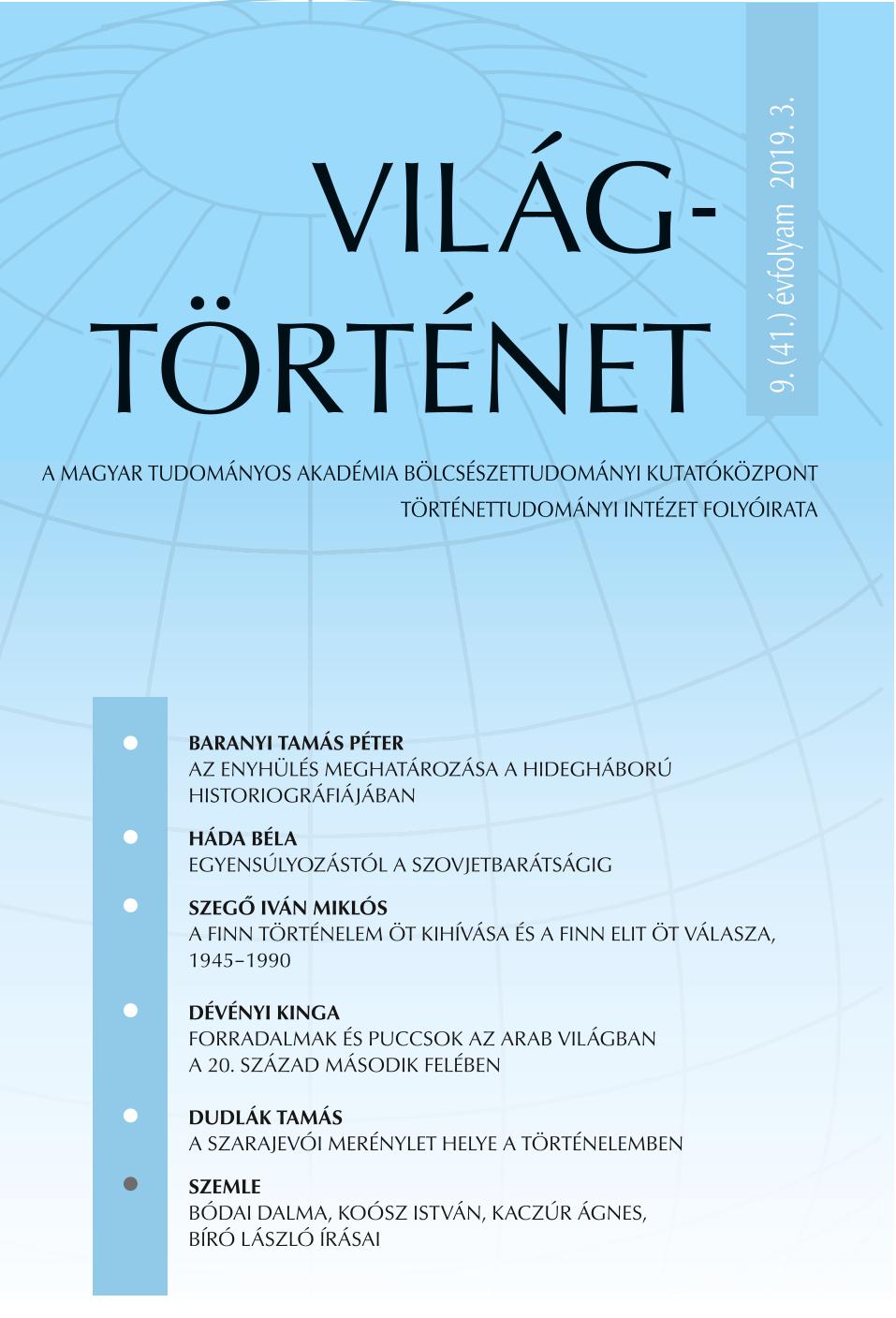A finn történelem öt kihívása és a finn elit öt válasza, 1945–1990
Five Challenges of Finnish History and Five Responses of the Finnish Elite, 1945–1990
Author(s): Iván Miklós SzegőSubject(s): Post-War period (1950 - 1989)
Published by: Magyar Tudományos Akadémia Bölcsészettudományi Kutatóközpont Történettudományi Intézet
Summary/Abstract: Self-restraint of elites prevails in Finland. Cultural background of self-restraint in this Northern country includes lutheranism and its pietist movement. The most effective economic systems are those that have inclusive institutions and are strongly defending property rights. In Finland, right of private property remained intact after 1945, since Helsinki avoided sovietization in 1948. I also examine the handling of critical economic turning points and the social embeddedness of the Finnish elite, and how these phenomena correlate with economic success. I try to model Finnish economic development between 1945–90 by the challenge-response-theory of Toynbee. The Finnish elite gave good responses to five challenges, thus Finland had to face new and even newer challenges, each after the other. I found that consensually unified elites in Finland endorsed the constant and consistent economic growth of the country. Influence of the Kremlin on economic and political decisions can also be observed in Finland between 1945 and 1990.
Journal: Világtörténet
- Issue Year: 2019
- Issue No: 3
- Page Range: 389-421
- Page Count: 33
- Language: Hungarian

